You’ve probably heard of the Greek Gods of Mount Olympus. But do you know their names, their powers, or what the Ancient Greeks thought about them? Here’s some info on the Olympic Gods.
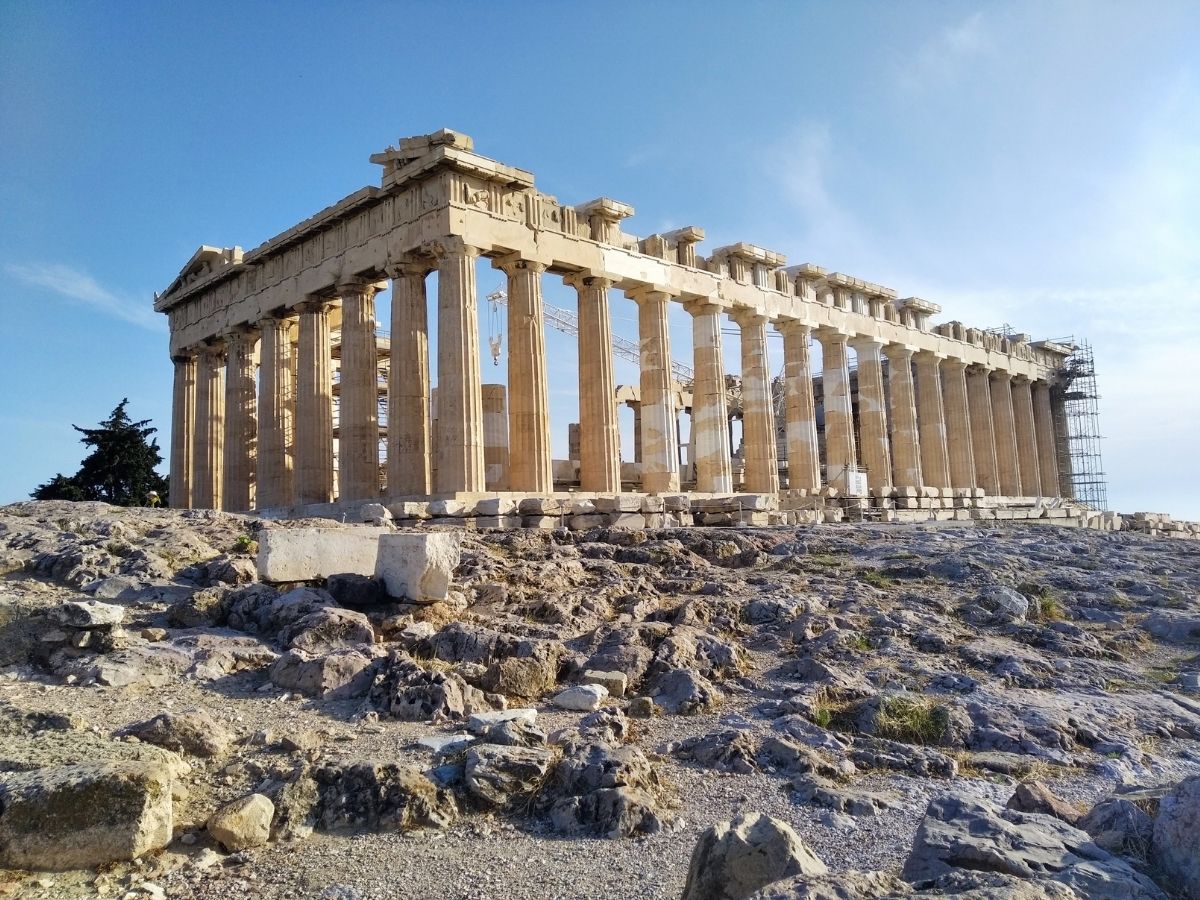
The Twelve Olympians
In Ancient Greece, people worshipped thousands of gods and goddesses. There were deities for every aspect of everyday life, and each of them had a specific role.
Ancient Greeks built temples and sanctuaries all around the country, to pay their respects to the gods. You’ve probably heard of the most famous one, the Parthenon, which is pictured below.
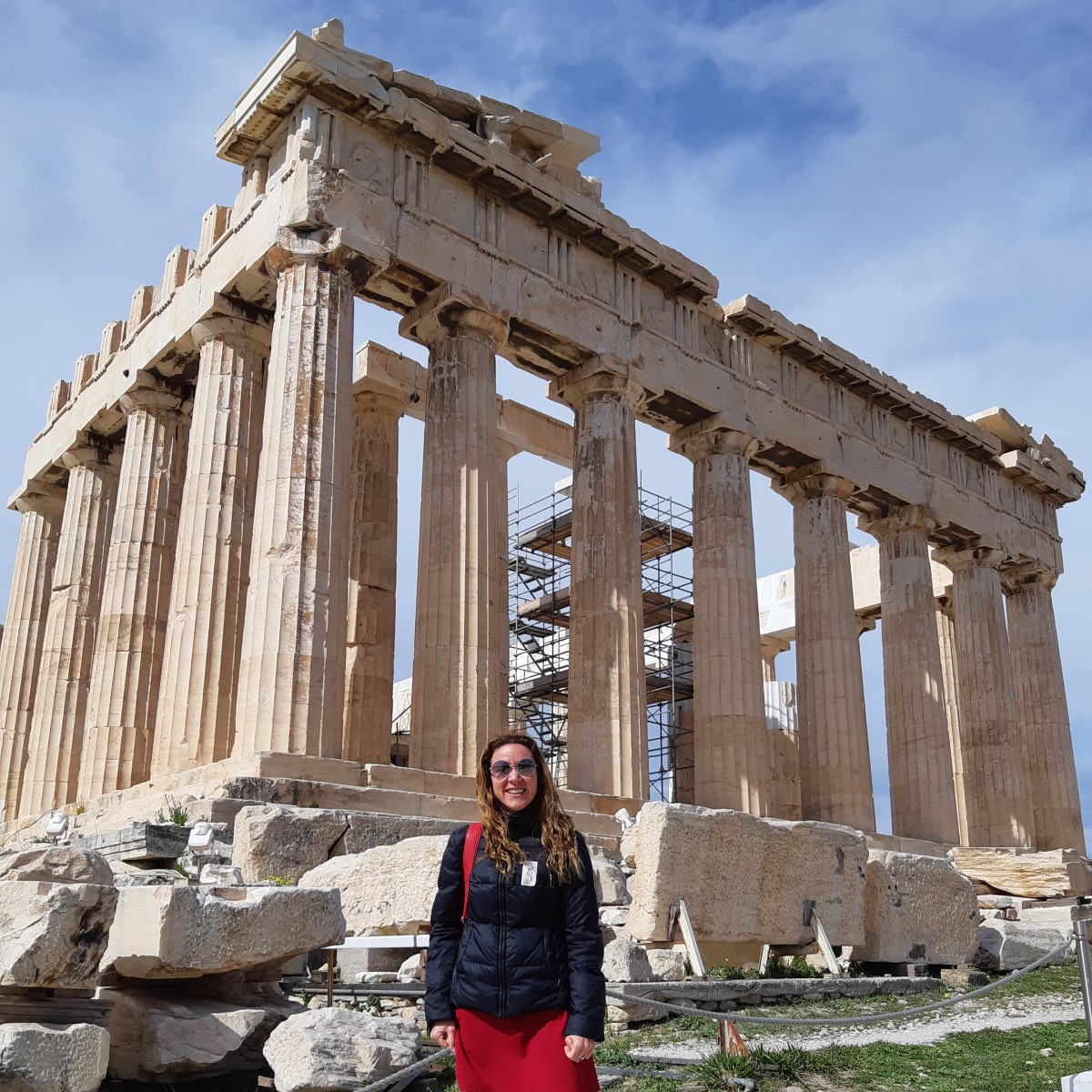
The ancient Greek Gods were much more than just stories and legends. They were an integral part of culture, society and tradition. The relationships between them were complex, and often shocking by today’s standards.
Among the Greek pantheon of gods, the most important were the twelve Olympians. They lived on Mount Olympus, which is located in Northern Greece, between Thessaly and Macedonia.
Here are the 12 Olympic gods and goddesses:
- Zeus
- Hera
- Poseidon
- Athena
- Apollo
- Artemis
- Ares
- Aphrodite
- Hephaestus
- Demeter
- Hermes
- Hestia
In this article, we will discuss their aspects, characteristics, and some famous Greek myths or stories surrounding them.
Fun fact – the Ancient cult lives on! From time to time, certain ceremonies are organized around the country. The biggest one is called Promitheia, and it takes place in Litohoro, at the foot of Mt Olympus.
The pre-Olympian Gods: the Titans
Before we introduce the twelve Olympians, we need to go a little back in time, and explore Greek mythology.
Our best information about the Olympian Gods comes from the Ancient Greek poet Hesiod. His epic poem, Theogony, explains the origins of gods and the world.
According to Hesiod, everything started from Chaos. The first-ever state of the world was the emptiness, a void state. Chaos created three gods: Gaia, Tartarus and Eros.
Gaia was an ancient maternal deity, similar to Mother Earth. Tartarus was a deep, dark abyss, where criminals were punished, not dissimilar to Hell. Finally, Eros was the god of love and desire.
Different versions exist about the primordial gods. According to one version, Gaia had a son called Uranus, the God of the Sky. She later mated with him, which was a rather common practice in Greek Mythology. Their union created six male and six female gods, known as the Titans.
Cronus, the youngest son, became their king and leader. He ended up mating with his older sister, Rhea, the goddess of fertility and motherhood. Their union produced some of the 12 Olympian Gods.
Zeus overthrows the Titans
As Titan Cronus craved power, he castrated his father Uranus. He imprisoned him in Tartarus, where he was tortured forever. Soon, Rhea gave birth to five gods, Hestia, Demeter, Hera, Hades and Poseidon.
Cronus became paranoid that he would be overthrown by his own children. To prevent this from happening, he swallowed all of them whole after they were born.
Rhea, however, was not happy with this. When her sixth and youngest son, Zeus, was born, she had him hidden away from his father. Instead, she gave Cronus a large stone to swallow.
When Zeus grew older, he decided to take revenge. Cronus’ worst fears came true, as Zeus led the battle of the Gods against the Titans. He overthrew him and the other titans and liberated his siblings.
Zeus became the new ruler of Greece, and divided the world in three kingdoms. Zeus became ruler of the skies and the whole world. His brother Poseidon took over the ocean, seas and rivers. Along with their three sisters, they were the first generation of the Olympians.
Their brother Hades, who is also known as Pluto, became the king of the underworld. As Hades didn’t live on Mt Olympus, he isn’t one of the original twelve Olympians.
And now, let’s look into the twelve Olympic gods, one by one.
1. Zeus (Δίας / Ζευς)
Zeus was the lord of the sky and thunder, the father of gods and men. He used his thunderbolt to bring thunder and lightning down to earth. His sacred tree was the oak tree.
Following his father’s steps, Zeus got married to his sister, Hera. They had several children together, two of which became Olympian gods: Ares and Hephaestus.
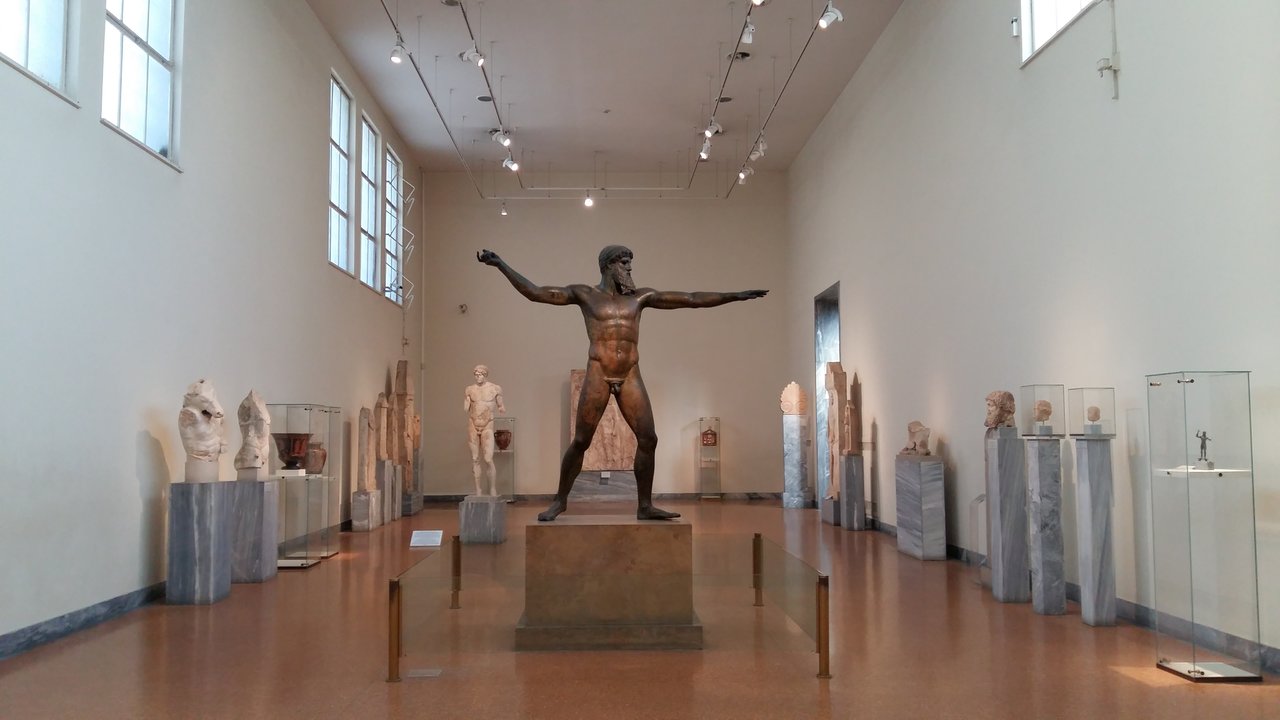
Perhaps the trait that Zeus is most famous for was his infidelity. As the king of Gods, he had many lovers, mortal and divine, women and men.
Some of his out-of-wedlock children, Athena, Apollo, Artemis and Hermes also became Olympian Gods. He was also the father of many other gods and famous heroes, such as Dionysus, Perseus and Heracles.
Several athletic games and events were organized to honour Zeus. The most famous were the Olympic Games, which took place in Ancient Olympia.
The famous artist Phidias constructed a grand statue of Zeus, made out of gold and ivory. It was placed inside his temple in Olympia, and people came from all around the Greek world to pay their tributes. Sadly, the statue has not survived.
Another important temple of Zeus is Olympieion in Athens, a short walking distance from the Acropolis. His Roman equivalent was Jupiter – his most important temple is on Capitoline Hill, in Rome.
2. Hera (Ήρα)
Like her mother Rhea, Hera was the goddess of fertility, women and marriage. Newly married and pregnant women all over Greece paid their tributes to Hera. Her symbols include a peacock, a pomegranate and a sceptre.
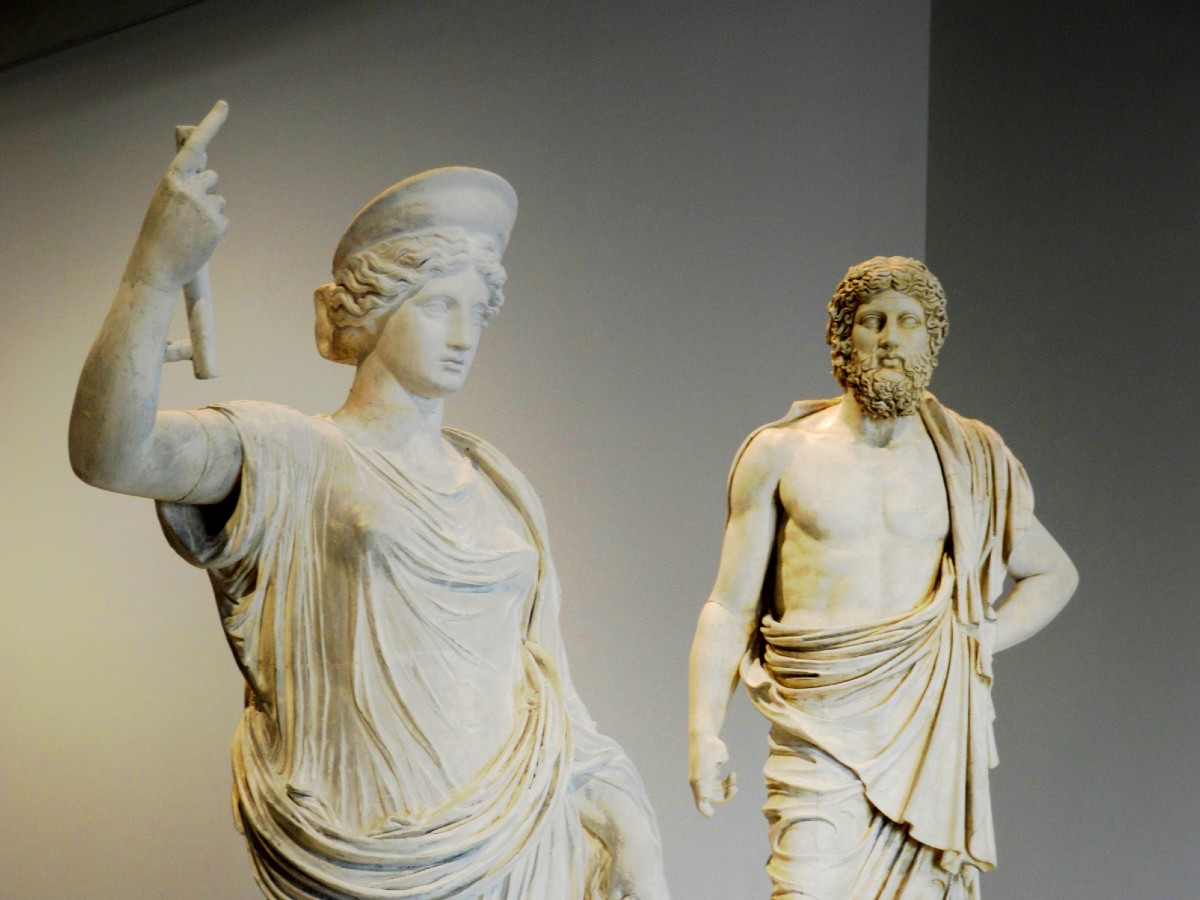
Many of the stories related to the Queen of gods concern her jealousy and vengeance. It is ironic that she protected marriage, but her own husband was not faithful to her.
One famous story describes her jealous rage against Zeus’ mortal mistress Io. Hera sent a gadfly to torture the woman for years, eventually driving her mad. Similarly, she made Herakles, Zeus’ illegitimate son, murder his own children.
The mighty goddess supported the Argonauts in their quest for the Golden Fleece, aiding them on many occasions. She also helped the united Greek tribes during the Trojan War.
Hera was the patron goddess of Argos and Samos, where she was born. There were many sanctuaries built in her honour, all around Greece.
3. Poseidon (Ποσειδών)
Poseidon was the God of sea and rivers, but also of earthquakes, storms and horses. His most instantly recognizable symbol was the trident, followed by the bull, the horse and the dolphin.
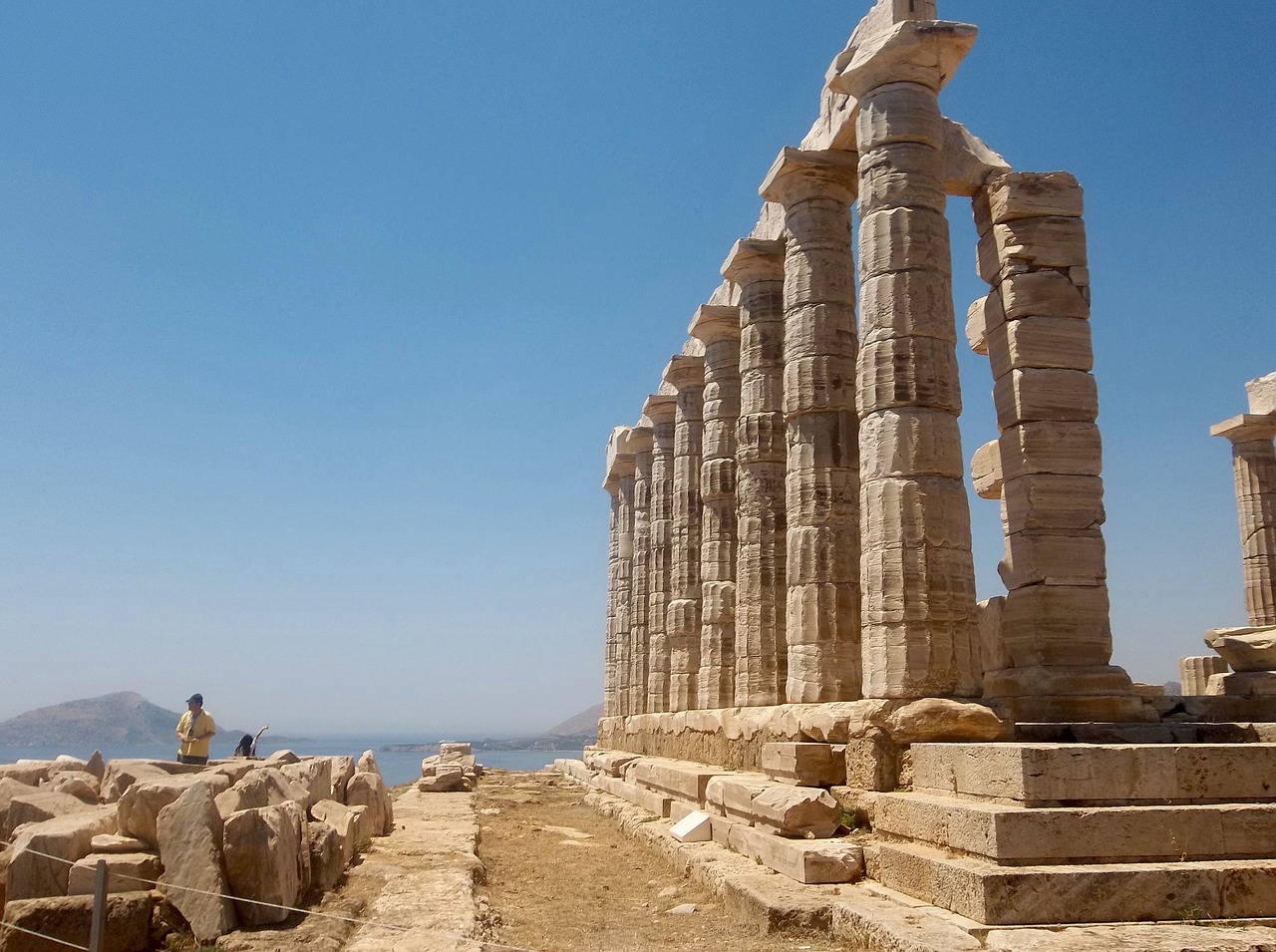
Poseidon lived in his palace, in the depths of the Ocean, with his Nereid wife Amphitrite. However, he spent a significant amount of time on Mount Olympus.
God Poseidon was known for his temper, and would often punish mortals who desecrated or invaded the sea. Those who mistreated them were often hunted down by his chariot.
Like his brother, the god of the sea was very keen on out-of-wedlock relationships. He had over 100 illegitimate children, two of which are Theseus and Pegasus, the mythical horse.
As Greece is surrounded by sea, there are many temples of Poseidon all around the country. The most famous temple is at Cape Sounion, an hour out of Athens.
4. Athena (Αθηνά)
Athena was the daughter of Zeus and his first wife, Metis. According to legend, she was born out of the head of Zeus, complete with full armour and shield.

She was the virgin goddess of wisdom, justice and war strategy, and supported Greeks in the Trojan War. In addition, she is associated with crafts such as embroidery and weaving.
Athena is usually depicted wearing a battle helmet. Often, she carries an owl on her shoulder or holds up a snake coiled around her arm.
One of the best known legends in Greek Mythology concerned the rivalry between Poseidon and goddess Athena. The two Olympians competed for the city of Athens.
Poseidon struck the Acropolis with his trident, creating a salt water spring. He was outsmarted by Athena, who planted an olive tree. King Cecrops judged that the sacred tree was more valuable, and so the city was awarded to her.
The most famous and beautiful temple dedicated to Athena is the Parthenon. It is located inside the Acropolis of Athens, and thousands of people visit every year.
5. Apollo (Απόλλων)
Apollo and his twin sister Artemis were the children of Zeus and Leto. They were born on the sacred island of Ancient Delos.
Apollo was the god of the sun and light, music, poetry and oracles, and gave people the Delphic Maxims. He was also connected with healing and medicine, mainly through his son Asclepius. He was worshipped all around Greece, most notably in Ancient Epidaurus.

The Olympian God is generally considered to be one of the most handsome gods in Greek mythology. He is often depicted holding a string instrument, the lyre, which he played beautifully. Among his numerous lovers, we can find the nine muses, several nymphs and demi-goddesses.
Apollo’s most famous story is the one about his battle with Python, the ancient serpent that lived in Ancient Delphi. Apollo killed Python, and became the deity of the Delphic Oracle, the most important oracle among Ancient Greeks.
During winter, the handsome god emigrated to Hyperborea. This was a mythical land somewhere to the North. It could be today’s Britain, Scandinavia or Siberia. He came back to Greece in spring, and his return was celebrated appropriately.
According to a lesser known myth, Apollo fell in love with the teenager Kyparissos. Unknowingly, Kyparissos killed Apollo’s sacred deer, thinking it was prey. Realizing his mistake, he begged the gods to let him die as well.

Apollo, feeling sorry for the young man, transformed him into a cypress tree. The tree was dedicated to Hades, the god of the underworld, and became a symbol of mourning. To this day, you can still see cypress trees outside most Greek cemeteries.
6. Artemis (Άρτεμις)
Artemis was the daughter of Zeus and Leto, and the twin sister of Apollo. She was born slightly before her twin brother, and aided her mother in giving birth.
Known as the Greek goddess of hunting and animals, she was also the protectress of mountains and forests.

She is often depicted as a pretty young woman wearing a short dress, holding her mighty bow and poisonous arrows. Other symbols include the deer and the bear.
Artemis was one of the most popular deities in Ancient Greece, because she protected girls from becoming pregnant before marriage. In fact, her father Zeus had granted her permission to remain a virgin.
The Ancient Greeks had several sanctuaries dedicated to her, where young virgins offered their time to her service. She was particularly popular in the Peloponnese, especially in Arkadia and Laconia.
One of the most impressive temples of Artemis is at Ancient Brauron, a short drive away from Athens. Among other places, she was also worshipped in the Cave of Antiparos, one of the Cyclades islands.
7. Ares (Άρης)
Ares, the son of Zeus and Hera, was the mighty God of War. According to many myths, he was aggressive, belligerent and impulsive, and urged humans into violent battle. He is pictured as a tall, dark, strong man in full armour.

The God of War famously had an affair with the Greek goddess Aphrodite, who was married to Hephaestus. The disgraced husband caught the two lovers, and shamed them in front of the other Olympians. Apart from Aphrodite, Ares had several other lovers, and fathered many children.
Ares was not among the most popular Greek Gods. According to the Iliad, even Zeus himself wasn’t too fond of his own son. This explains why Ares didn’t have as many temples dedicated to him as other Olympian Gods.
Some of the ruins of a temple of Ares can be seen in the Ancient Agora of Athens.
8. Aphrodite (Αφροδίτη)
Aphrodite was the goddess of love, passion and beauty. Hesiod mentions that she was literally created out of sea foam, when the severed genitals of Uranus fell into the sea.
According to Homer on the other hand, Aphrodite was the daughter of Zeus and Dione.
The goddess of beauty was born either in Cyprus, or in Kithira, one of the Ionian islands. There are several temples where she was worshipped, in both Cyprus and Greece.
Her famous statue was found on the Greek island of Milos, and can now be seen in the Louvre.

The stunning Greek goddess was offered to Hephaestus, the god of metalworking, who was famously crippled and ugly. To compensate, Aphrodite had many lovers, both gods and mortals.
Apart from Ares, one of her most famous lovers was Adonis, an attractive young man who was eventually killed by a wild boar. Aphrodite mourned his death, and created anemones in his memory.
Plot twist: Adonis was androgynous. Apollo, Heracles and Dionysus were also said to have fallen in love with him.
9. Hermes (Ερμής)
Hermes was the son of Zeus and the nymph Maia. Due to his cleverness, he had various roles, and was one of the most popular Greek gods.
Hermes was known as the messenger god of the Olympians. He wore winged sandals, which allowed him to travel quickly between Mount Olympus and Earth.
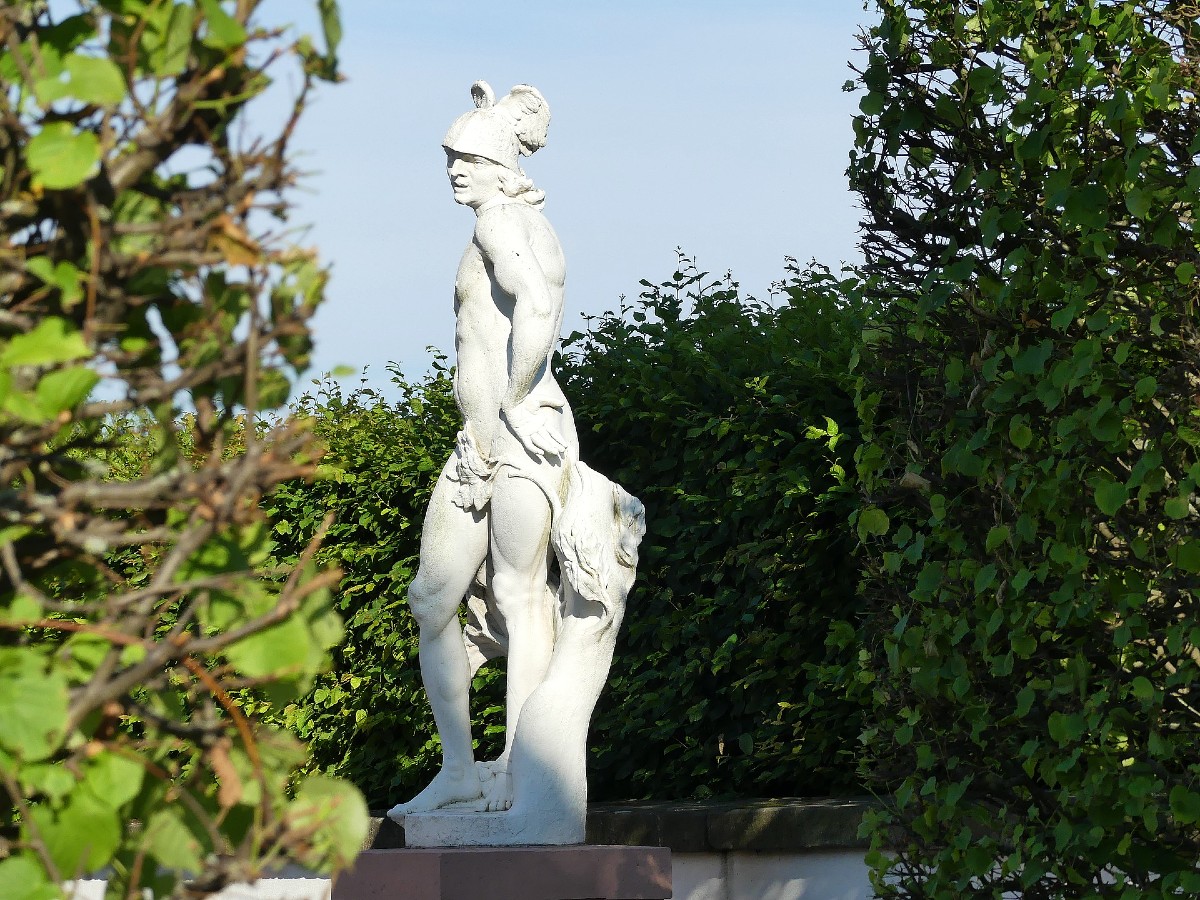
He was also the God of commerce, and was often depicted with a purse around his neck. In addition, he guided the souls of the dead into Hades. He was the protector of merchants, travellers and shepherds, but also thieves.
It was believed that Hermes introduced letters, science, invention and possibly fire. Some of his symbols included a caduceus entwined by two serpents, and a lyre which he made out of a tortoise shell.
The most famous myth about Hermes revolves around him stealing Apollo’s divine cows, when he was still a toddler. The god of Sun found out and dragged him to Mount Olympus. He made him stand in front of the throne of Zeus, where Hermes admitted the theft.
Eventually, the two brothers reconciled, and Hermes gifted the tortoise shell lyre to Apollo. Their father gave Hermes many tasks, to keep him busy.
In terms of love affairs, Hermes didn’t have as many as other Olympic gods. His relationship with Aphrodite resulted in Hermaphrodite, who was born male, but later became bigender.

In most cities and towns in modern Greece, the main commercial street is called “Ermou”, in favour of the cherished Olympian God.
10. Demeter (Δήμητρα)
Demeter was the goddess of harvest, grain, and fertility. She had control over the weather, the seasons and harvest, and was therefore important for Greek peasants and farmers.
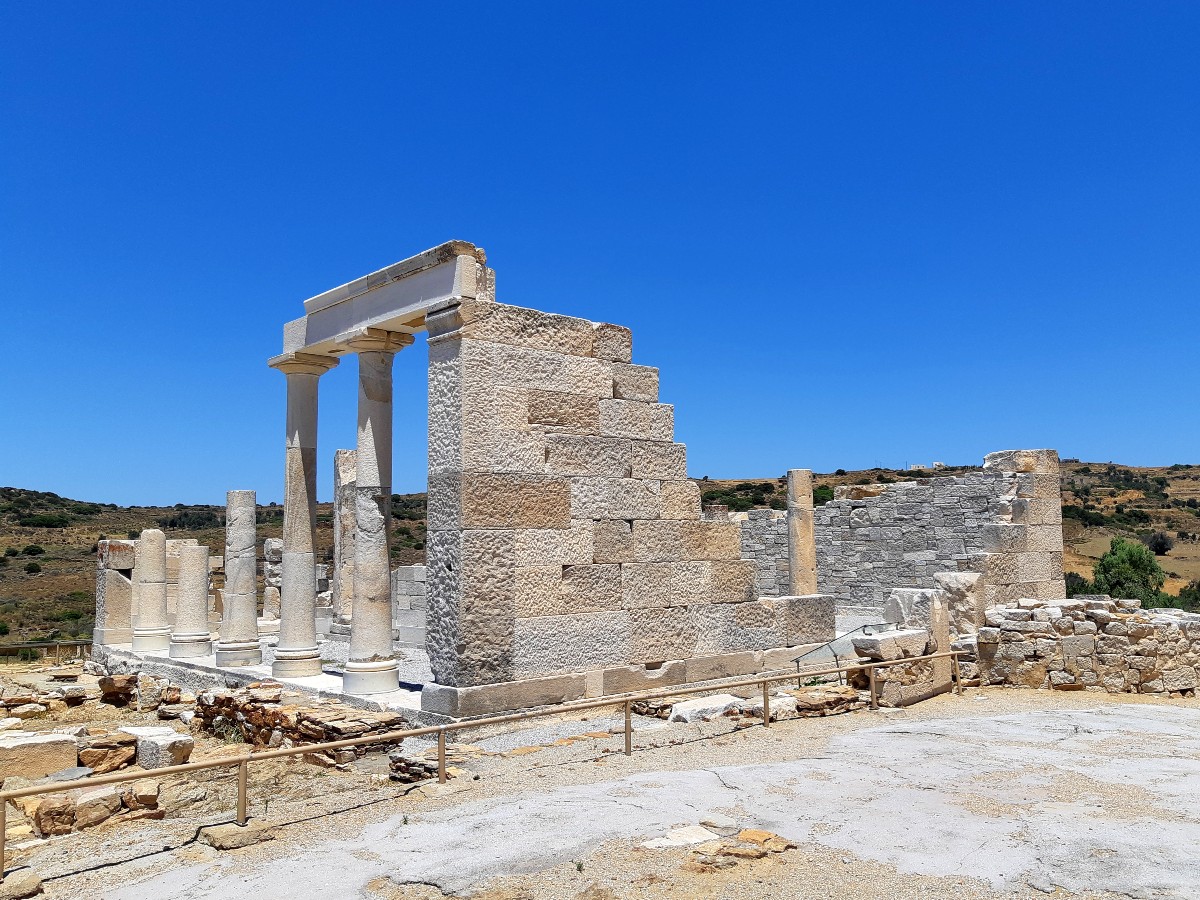
The popular goddess is often depicted sitting on a throne. Her symbols include wheat, bread and the Cornucopia, the horn of plenty.
Demeter was not famous for her affairs. Yet, she and her brother Zeus had a daughter, Persephone, the goddess of vegetation. The two goddesses were close to each other, and they monitored the seasons, agriculture and plants.
The god of the Underworld, Hades, kidnapped Persephone, intending to make her his wife. At that point, Demeter fell into depression, and stopped making the crops grow. As a result, famine struck Greece.
To prevent further consequences, Zeus mandated that Persephone could return to Earth, as long as she spent four months per year with Hades.
Demeter’s most famous temple was located in Eleusis, a town a few kilometres from Athens. A sacred ceremony called the Eleusinian mysteries took place on an annual basis, to aid the growth of the crops. Another temple of Demeter we can see today is on the island of Naxos.
11. Hephaestus (Ήφαιστος)
Hephaestus was the Olympian god of forging, fire and volcanoes. He is the protector of artisans and craftsmen like blacksmiths, metal workers, stonemasons, carpenters and sculptors.
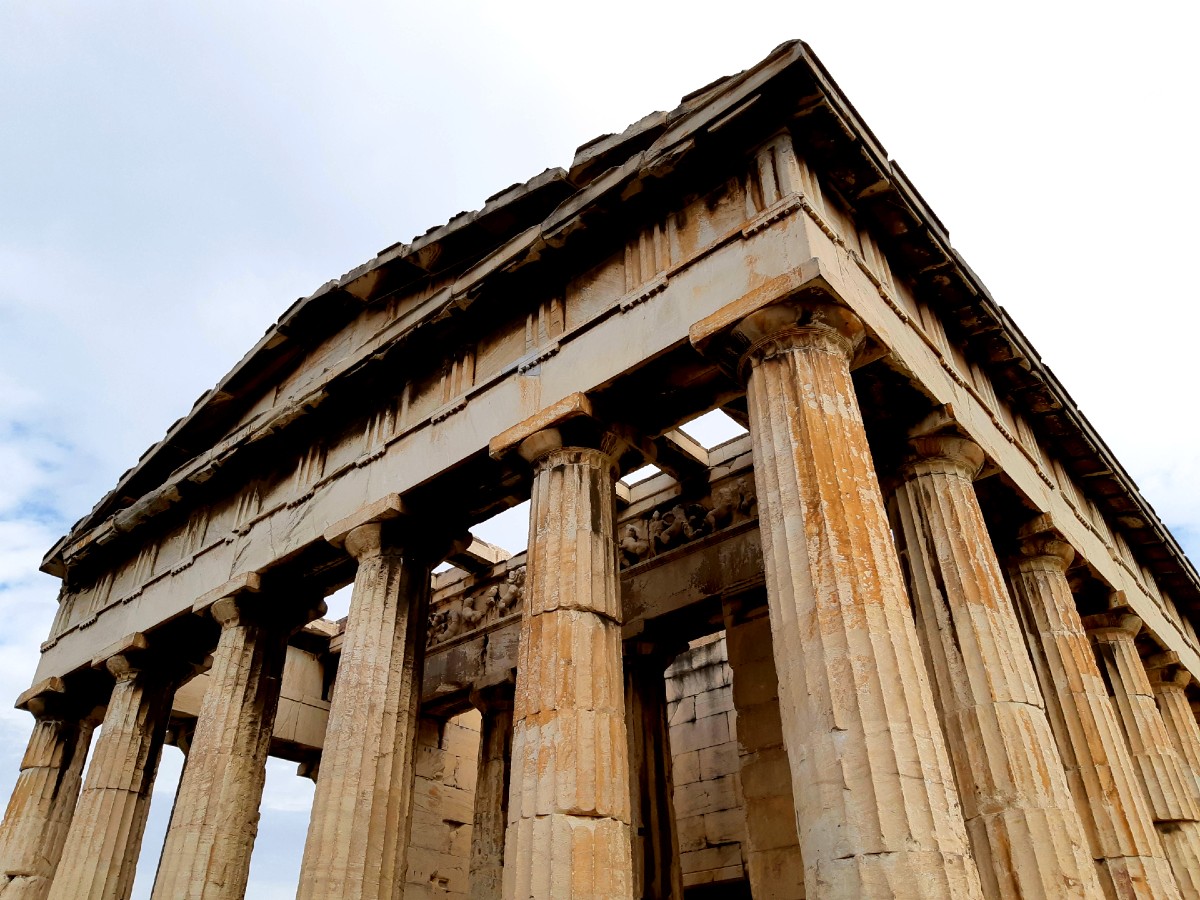
Contrary to the other Olympic gods, Hephaestus was ugly and deformed. His own mother, Hera, was shocked at his appearance, and threw him off Olympus, which left him crippled.
His revenge was clever and brutal. He created a magnificent golden throne for his mother, and when she sat, she was bound with invisible chains.
To appease him, the Olympic gods offered him Aphrodite as his wife. However, as we know, the beautiful goddess was far from faithful.
A skilled craftsman himself, Hephaestus created many wondrous inventions including Zeus’ thunderbolts and Athena’s shield. He also used unique materials and precious metals to build the magnificent palaces on Olympus.
Hephaestus spent most of his time on Mt Olympus, though according to one theory his workshop was on Lemnos island. The temple of Hephaestus in Athens is the best preserved ancient temple in the whole of Greece.
12. Hestia (Εστία)
Hestia was the first-born Olympian. She was the goddess of family, home and the fireside, or hearth. She kept the fireplace on Mt Olympus alive, and people’s animal sacrifices went through her first.
Hestia was peaceful and passive in nature. She never married, and chose to remain virgin. Her rare depictions are simple, and never extravagant. In fact she resembles an everyday woman more than a goddess.
There were few temples of Hestia in Greece. This is because every hearth in the country was, in effect, her sanctuary.
Sometimes, Dionysus, the God of wine and madness, replaces Hestia in the pantheon of the 12 Olympians.
Frequently asked questions about the 12 Olympian Gods
Here are some questions that people often ask:
How many Greek gods and goddesses lived on Mount Olympus?
There were twelve Greek gods and goddesses who lived on Mt Olympus: Zeus, Hera, Poseidon, Athena, Apollo, Artemis, Ares, Aphrodite, Hephaestus, Demeter, Hermes and Hestia.
Who is the strongest Greek god?
The strongest Greek god was Zeus, known in modern Greek as Dias. He overthrew his father, Cronus, and became the king of gods.
Is Zeus married to his sister?
Zeus was married to his sister, Hera. They were both children of the Titans Cronus and Rhea. On top of that, Zeus had several other wives and numerous affairs.
What happened to the twelve Greek gods and goddesses?
With the rise of Christianity and the Byzantine Empire, the ancient religion was gradually banned and faded away. Materials from the ancient temples were often used to build Byzantine churches and other buildings.
Do the Greek gods still exist?
The main religion in Greece is Christianity. However, there is a small number of people who worship the twelve gods of ancient Greece. In recent years, there have been a few ceremonies in honour of the ancient gods.
Greek Mythology Gods of Mount Olympus
I hope you have enjoyed this introduction to the twelve Olympic gods and goddesses. If you have a particular interest in the ancient Greek gods and heroes, consider taking a Greek mythology tour when you are in Greece – they are fab!
You might like these other articles:
- Ancient Greek theatres
- Famous Ancient Greek philosophers
- Quotes about Greece
- Useful words in Greek
- Interesting facts about the Greek flag

Hi! I am Vanessa from Athens, and I love helping people discover more about my country. I’ve always been fascinated by Greek Mythology, and found the Greek Gods of Mount Olympus particularly interesting. With all their bizarre love stories, it’s not strange that the Greek Orthodox Religion banned the ancient culture altogether… What do you think?

Hello,
Do you know of a website that I could subscribe to that emails out a Greek mythology story once a week? Thank you!
Hi Cary! This is a cool question, I’m afraid I don’t know. Perhaps check on YouTube as there may be some nice videos? (and let me know if you do!)